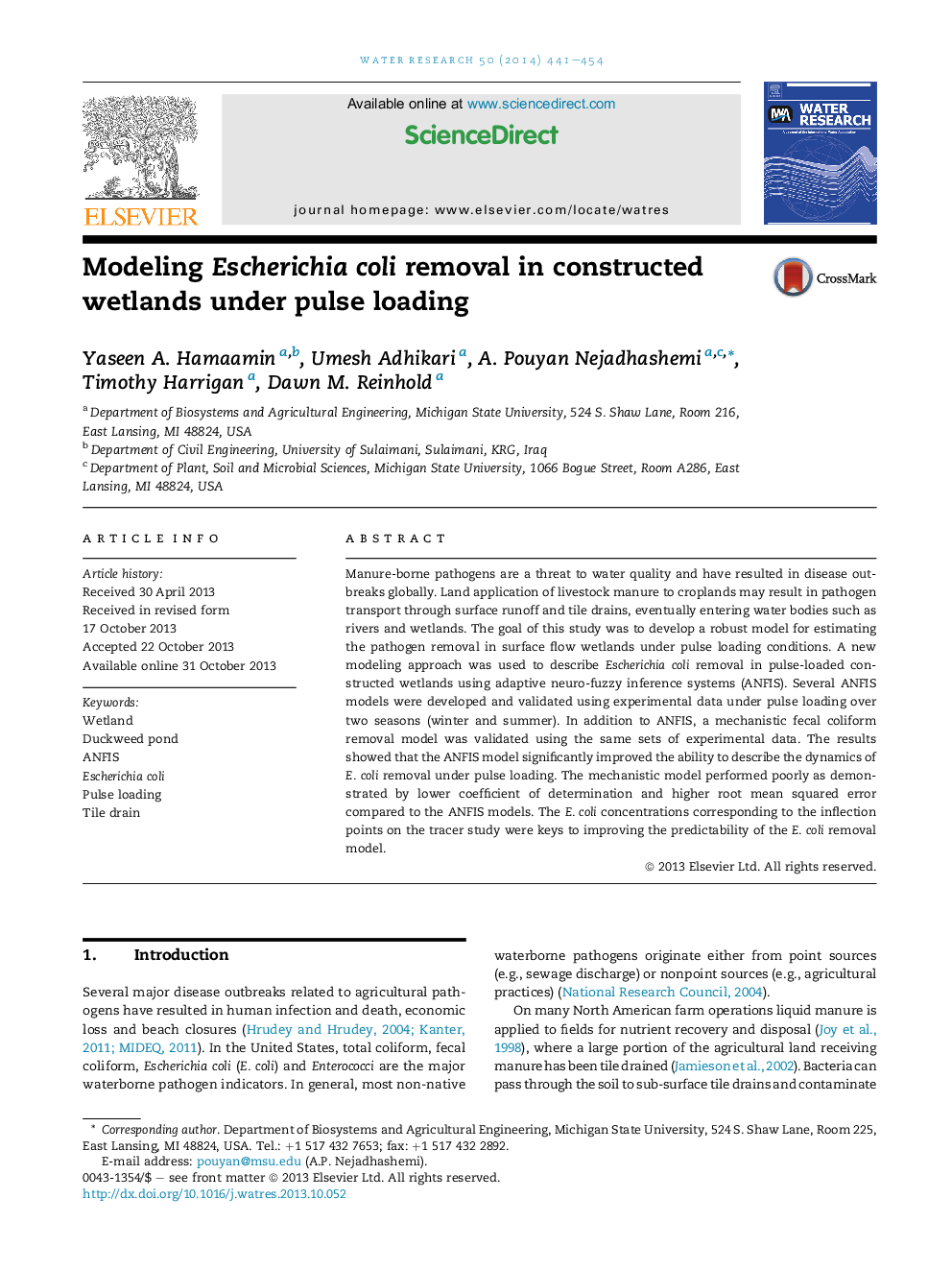| Article ID | Journal | Published Year | Pages | File Type |
|---|---|---|---|---|
| 6367030 | Water Research | 2014 | 14 Pages |
Abstract
Manure-borne pathogens are a threat to water quality and have resulted in disease outbreaks globally. Land application of livestock manure to croplands may result in pathogen transport through surface runoff and tile drains, eventually entering water bodies such as rivers and wetlands. The goal of this study was to develop a robust model for estimating the pathogen removal in surface flow wetlands under pulse loading conditions. A new modeling approach was used to describe Escherichia coli removal in pulse-loaded constructed wetlands using adaptive neuro-fuzzy inference systems (ANFIS). Several ANFIS models were developed and validated using experimental data under pulse loading over two seasons (winter and summer). In addition to ANFIS, a mechanistic fecal coliform removal model was validated using the same sets of experimental data. The results showed that the ANFIS model significantly improved the ability to describe the dynamics of E. coli removal under pulse loading. The mechanistic model performed poorly as demonstrated by lower coefficient of determination and higher root mean squared error compared to the ANFIS models. The E. coli concentrations corresponding to the inflection points on the tracer study were keys to improving the predictability of the E. coli removal model.
Related Topics
Physical Sciences and Engineering
Earth and Planetary Sciences
Earth-Surface Processes
Authors
Yaseen A. Hamaamin, Umesh Adhikari, A. Pouyan Nejadhashemi, Timothy Harrigan, Dawn M. Reinhold,
